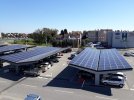That’s not right. The asset life of offshore wind farms is now 35 years. Many will simply be re-powered (have the latest turbines put on them) in 35 years and go for another 35 years and are designed with that in mind. Investors are investing in them (with your money - eg pension funds) on that basis. The LCOE of renewables is below conventional power now - cheaper than coal, gas and nuclear. The only real issue with renewables is the intermittency (dependent on sun shining and wind blowing) - but that will be solved by the end of this decade through a mixture of green hydrogen (using surplus wind and solar to produce hydrogen carbon free, which can be stored (it’s a gas) and then later used to produce power - again, carbon free - when it’s dark and not very windy), lots of (and better) batteries (including your future car) and a smarter grid (appliances, cars, industry etc taking power when there is plenty of it and avoiding taking it when there is less being produced, without detriment to their end processes).Something that isnt often mentioned in the great race to decarbonise is that the majority of the products from the refining process are still going to be needed for many years (forever for some), such as Asphalt and oil based lubricants. One issue will be the millions of gallons of now useless petrol and diesel and what will be done with it all? In the olden days they dumped it straight into the sea! Maybe the geniuses leading the great race might want to look at a way to get rid of this now useless and worthless fuel oil. I dont know maybe a power station powered by Petrol would help.
The other problem is in 25 years all that renewable equipment is going to need to be replaced at great expense especially all those wind farms out at sea.
Anyways I digress, good news on the overheads going up none the less.
As somone who works in the energy sector, I can tell you there is an energy revolution underway. I would never have imagined that we would be building 13MW turbines in the North Sea 10 years ago. The advancement is HUGE. So we need to electrify as much as possible now in order to take advantage of what is coming down the track (to pardon the pun).
Plus, diesel is full of harmful substances - just stand on a platform and smell it. I wouldn’t let my child stand next to a smoking DSU.

